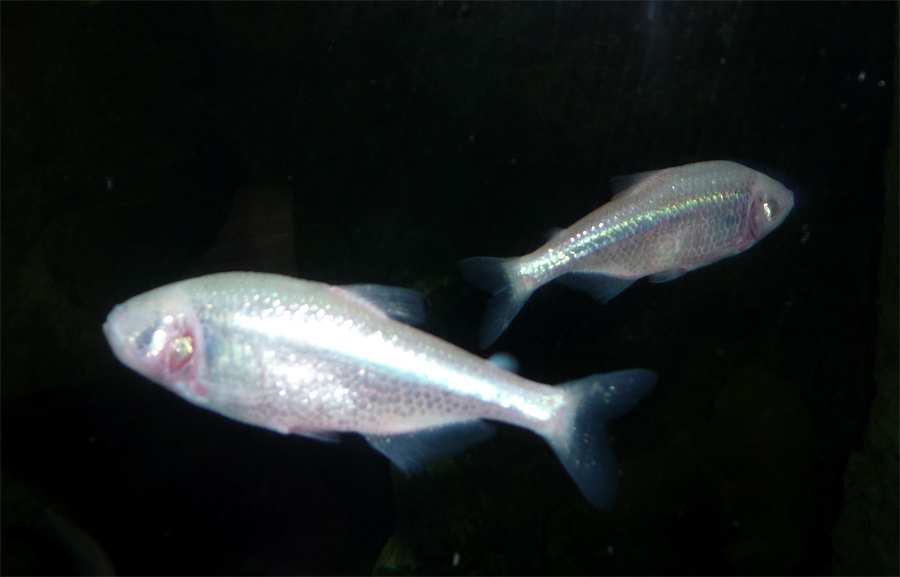 Image of cave dwelling Mexican tetra By Citron via Wikimedia Commons
Image of cave dwelling Mexican tetra By Citron via Wikimedia Commons
Mexican tetra (Astyanax mexicanus) are a fascinating example of divergent evolution. Over time, some of these freshwater river fish washed into caves where they continue to live. With perpetual darkness, these cavefish have lost their ability to see along with their skin pigmentation. Oxygen and food are also hard to come by in the caves. In fact, the cave dwelling fish may go for months without eating as they wait for seasonal floods to deliver foods. Dr. Cliff Tabin (Harvard Medical School) recently presented his research on these fish at the Pan-American Society for Evolutionary Developmental Biology meeting held at the University of Calgary, Alberta. His research compared surface dwelling and cavefish to identify metabolic differences in the animals that allow cavefish to thrive in their inhospitable environment. Through these studies he discovered remarkable similarities and differences between the cavefish and people with diabetes.
Insulin is a hormone that helps lower blood sugar after a meal by causing muscle and fat cells to absorb it from the blood. In type 2 diabetes, this insulin-induced glucose disposal is impaired causing blood sugar levels to remain high. Dr. Tabin's research shows that cavefish are also insulin resistant due to a mutation in the receptor that insulin binds to in muscles. Additionally, the livers of these fish store a lot of fat to help cope with times of starvation. Although the cavefish develop fatty liver and insulin resistance like a humans with diabetes, they do not display any pathologies. The researchers hope that by better understanding how these fish cope with sugar and fats, they may discover new ways to treat diabetes.
Source:
